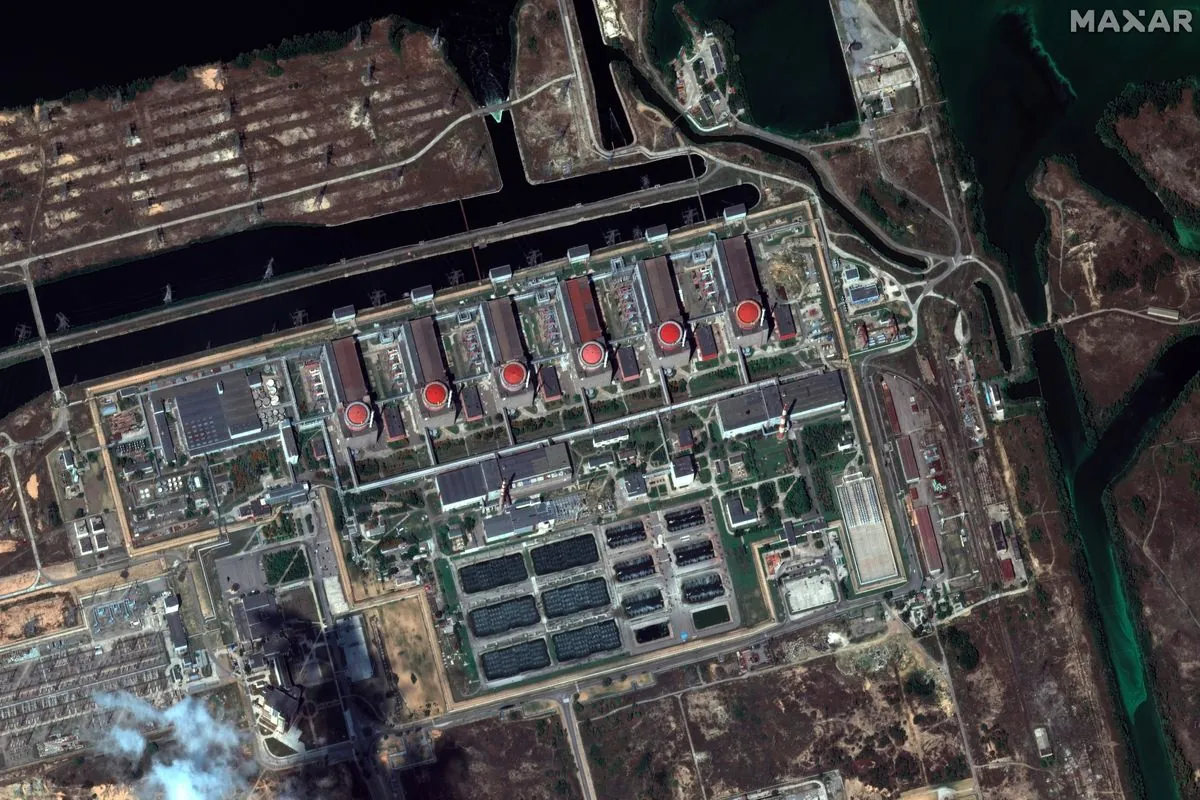In a significant development concerning nuclear safety in Ukraine, Rafael Grossi, the Director General of the International Atomic Energy Agency (IAEA), is en route to inspect the Zaporizhzhia nuclear power plant. This visit comes amidst ongoing safety concerns, as the facility remains under Russian control since the early stages of the full-scale invasion in 2022.
The Zaporizhzhia plant, Europe's largest nuclear power facility, has been a focal point of international concern due to its strategic importance and potential risks. Generating approximately 20% of Ukraine's electricity, the plant's six VVER-1000 pressurized water reactors underscore its critical role in the country's energy infrastructure.
Volodymyr Zelenskiy, Ukraine's President, announced plans to meet with Grossi in Kyiv following the IAEA chief's plant inspection. This meeting highlights the gravity of the situation and the need for high-level discussions on nuclear safety in the region.
The plant's status remains precarious, with both Ukrainian and Russian forces accusing each other of shelling the facility. These allegations have raised alarm bells in the international community, given the potential catastrophic consequences of any damage to the nuclear installation.
On September 2, 2024, Zelenskiy, accompanied by Dutch Prime Minister Dick Schoof, visited Zaporizhzhia city, situated across the Dnieper River from the nuclear plant. During this visit, the Ukrainian leader reiterated his appeal for advanced long-range weaponry from Western allies, emphasizing the strategic importance of such support.
"It is safer for Ukraine to control the Zaporizhzhia plant, but so far, from the point of view of the battlefield, I do not see such possibilities, and those that probably exist, they are dangerous."
This statement reflects the complex military and safety considerations surrounding the plant's current status. The facility's location on the banks of the Kakhovka Reservoir adds to its strategic significance, as the Dnieper River, Europe's fourth-longest, plays a crucial role in the region's geography and economy.
Recent reports indicate that a high-voltage power supply line at the plant automatically disconnected, although the facility's needs are being met through an alternative line. This incident underscores the ongoing technical challenges and potential vulnerabilities facing the plant's operations.
As the situation unfolds, the international community remains watchful. The IAEA, established in 1957 as an autonomous UN organization, continues to play a pivotal role in monitoring and safeguarding nuclear facilities worldwide. Grossi's visit represents a critical step in assessing the plant's condition and formulating strategies to ensure its safe operation amidst the ongoing conflict.
The city of Zaporizhzhia, founded in 1770 as a fortress, now stands as a testament to the region's resilience. As an important industrial center known for steel and aluminum production, it symbolizes the economic stakes in this conflict. The nearby Khortytsia Island, the largest on the Dnieper, serves as a reminder of the area's rich history and natural heritage.
As the world awaits the outcomes of Grossi's inspection and subsequent meeting with Zelenskiy, the Zaporizhzhia nuclear plant remains a potent symbol of the complex interplay between energy security, geopolitical tensions, and the imperative of nuclear safety in times of conflict.
